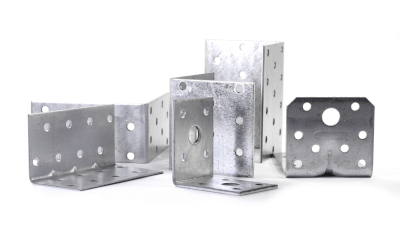What Is a Sheet Metal Bracket?

A bracket is a support or mounting bracket used to secure machine parts. Brackets that are manufactured through sheet metal processing are referred to as sheet metal brackets.
Sheet metal brackets are often processed through bending, drilling, tapping, and either C-chamfering or R-machining to prevent injuries.
To increase strength and support heavy loads, rib structures are welded onto these brackets, and techniques such as bending and pressing (triangular rib processing) are employed.
For heavy objects, sheet metal materials are typically iron-based, whereas for lighter objects, aluminum-based or other iron-based materials are used.
Uses of Sheet Metal Brackets
Sheet metal brackets are employed to secure mechanical and electrical components that require moderate strength in various equipment types, such as industrial machinery, optical devices, measuring instruments, automobiles, and home appliances.
Beyond merely securing parts, these brackets may also feature mechanisms for adjusting the position of fixed elements, such as utilizing long round holes instead of standard machined holes.
While machined parts are often used for components requiring high strength, sheet metal, being more cost-effective, is also used for securing heavy objects by welding ribbed structures to enhance strength.
Principles of Sheet Metal Brackets
With the advent of low-cost, high-power lasers, the capabilities of laser cutting machines have significantly improved. This advancement has enabled the cutting of thick sheet metal, previously a challenging task, allowing the production of sheet metal brackets up to 9 mm thick at a relatively low cost.
For large-scale production, brackets can be manufactured more cost-effectively using a turret punch press or by fabricating dies for press work.
Even with sheet thicknesses as thin as 1 mm or less, strong taps can be created using a drawing process known as “burring” combined with tapping.
Sheet metal brackets with multiple functionalities can be produced by incorporating welding nuts and spacers, which can be added with relative ease.
Standard sheet metal brackets are bent, but caution is advised as the shape of the bracket may be affected by holes near the bending area that is being stretched.